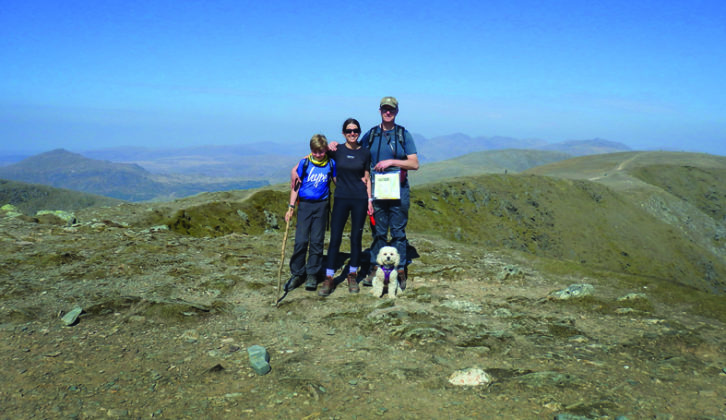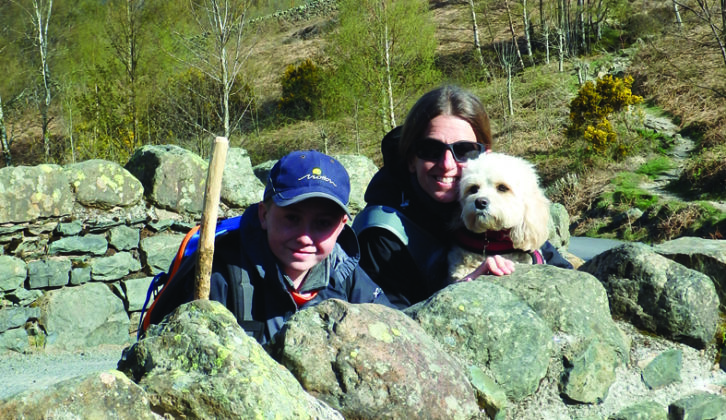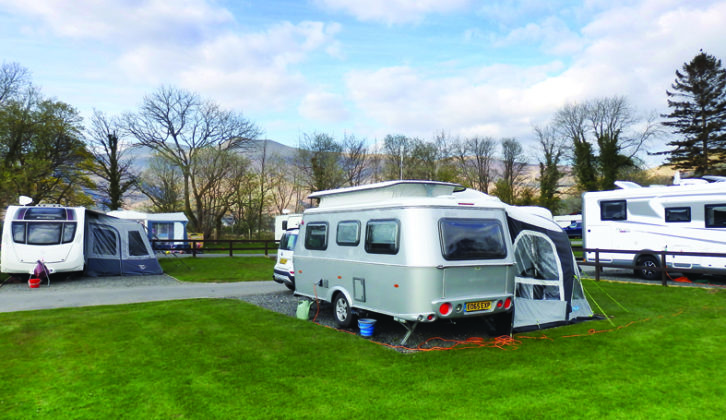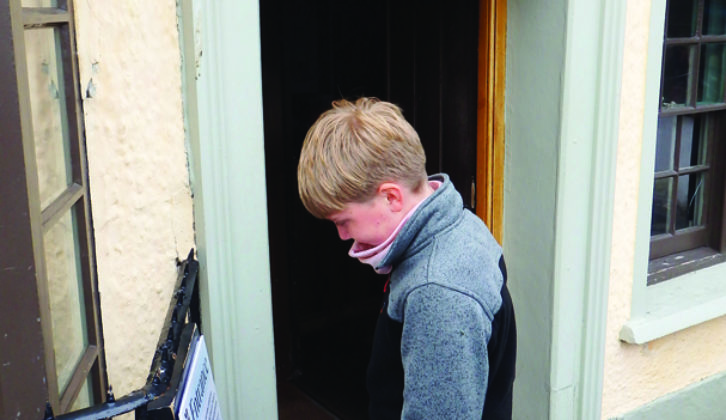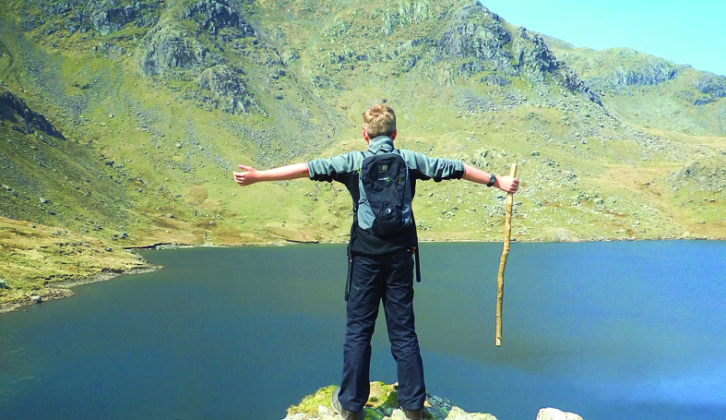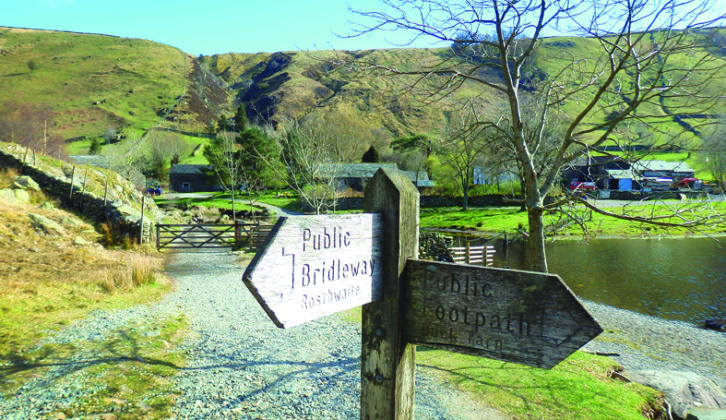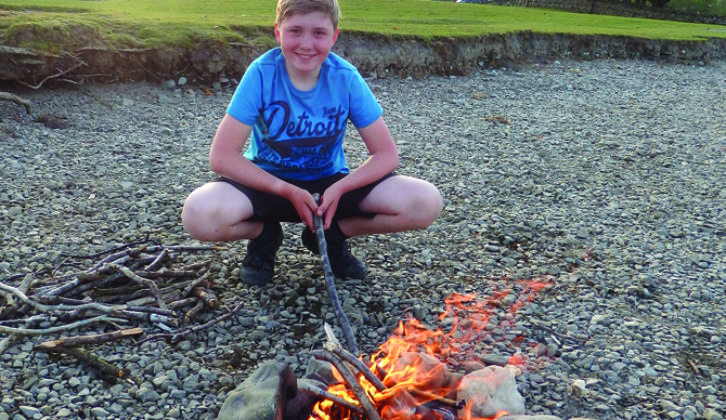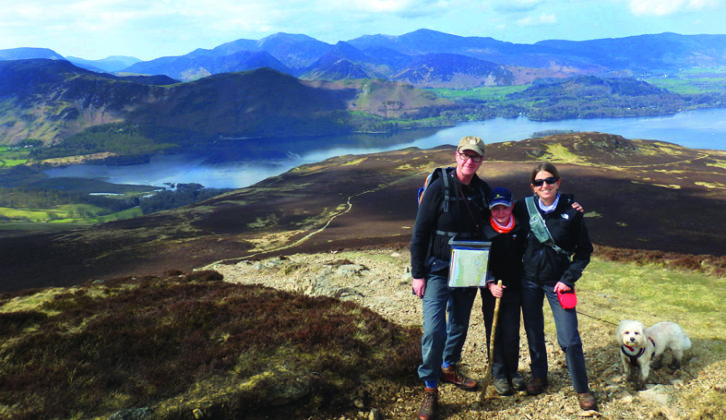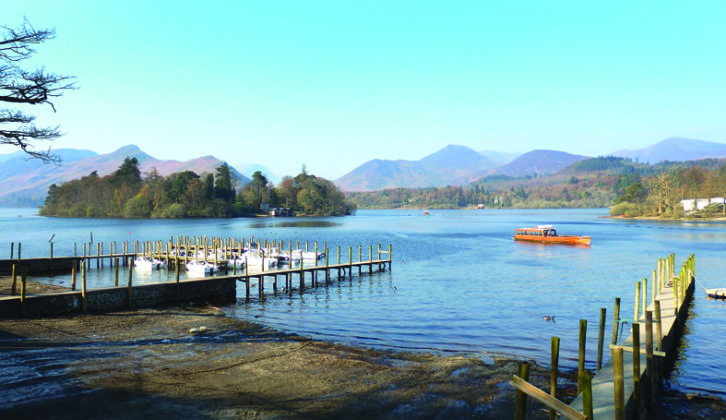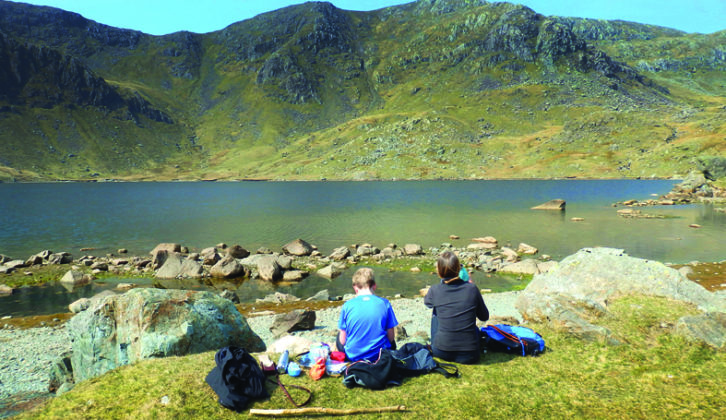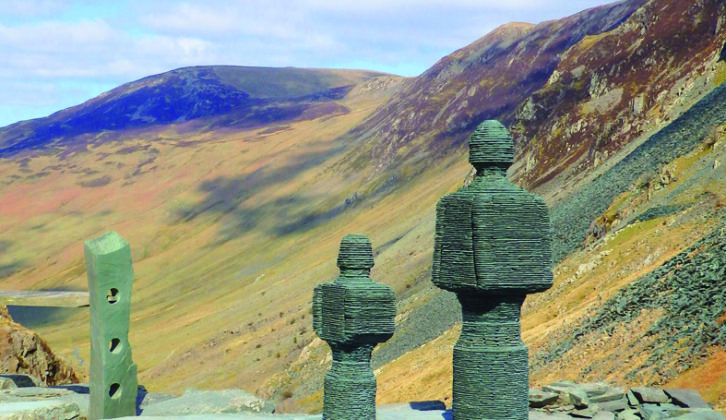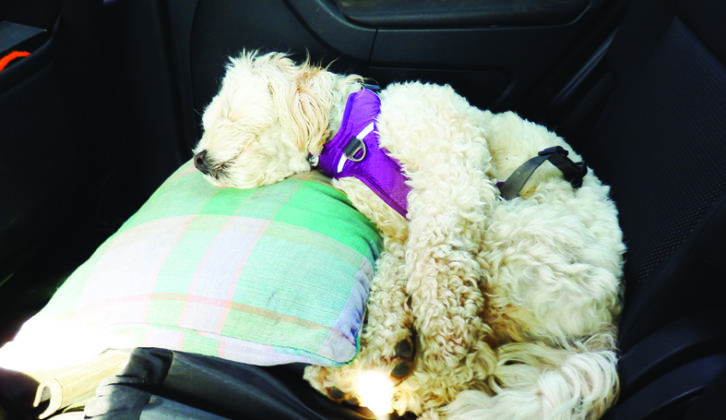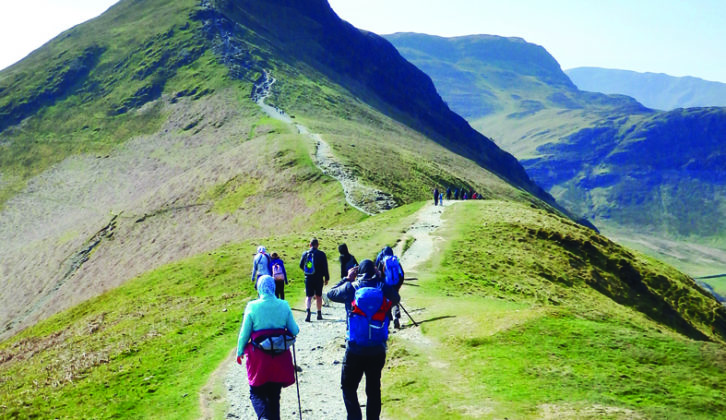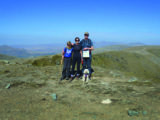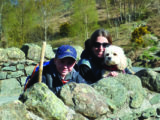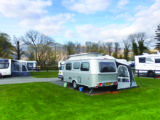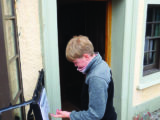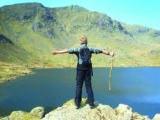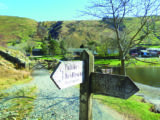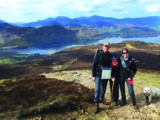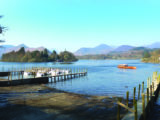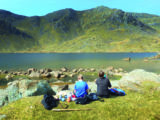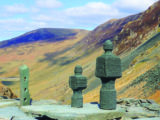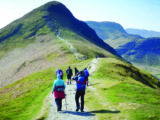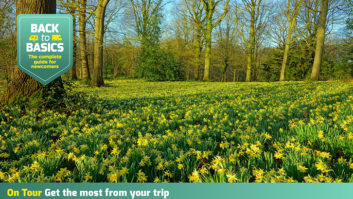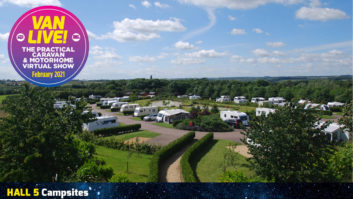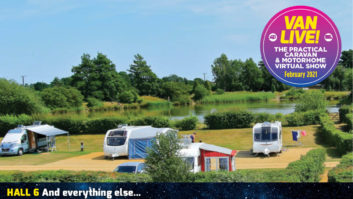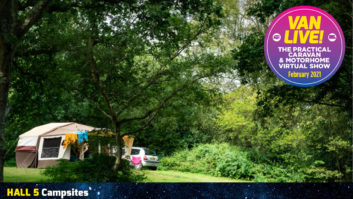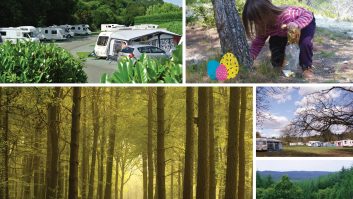Being snowed in at Christmas last year in the Lake District was truly magical. However, the short winter days and treacherous conditions meant we could not safely attempt the mountain summits that beckoned from afar.
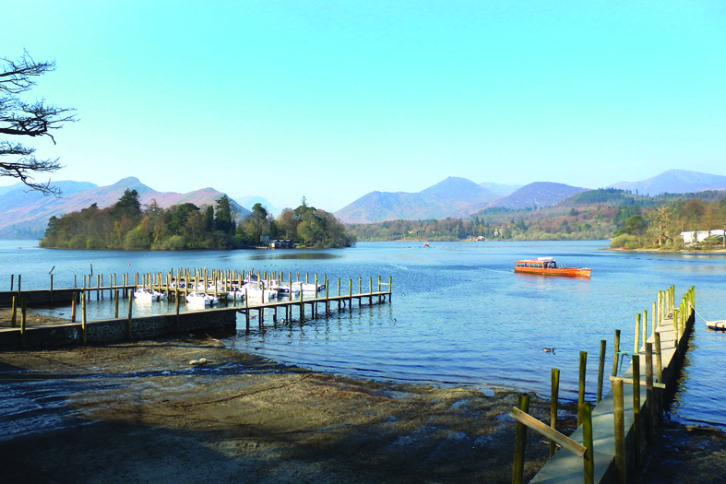
To rectify this, we decided to book a return visit to this wonderful region during spring, when we would divide our stay between two campsites: the Camping and Caravanning Club site at Keswick and the Caravan and Motorhome Club site in Coniston.
Perfect hiking conditions
Weather conditions for our spring trip were the polar opposite to those we experienced in winter. On our arrival at our first site, the wardens presented us with a long-term forecast that predicted a break from the persistent rainfall, giving way to incredibly balmy weather throughout our stay,
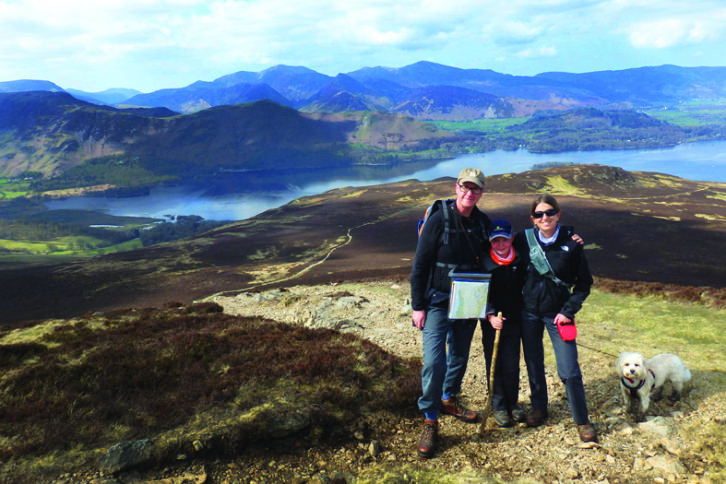
With stunning uninterrupted views over the shores of Derwentwater, backed by the imposing heights of Skiddaw and Blencathra (also known as Saddleback), we wasted no time in setting up.
We headed to nearby Keswick – the main town in the northern Lakes – where we stocked up at the supermarket and gathered information to develop a holiday plan over an ice-cream.
The Keswick site ticks all the boxes for convenience, with plenty of places to eat and drink nearby. However, the highlight was discovering the numerous trails that are easily accessible from the campsite, as well as the possibility to launch a kayak from there.
A red squirrel ramble
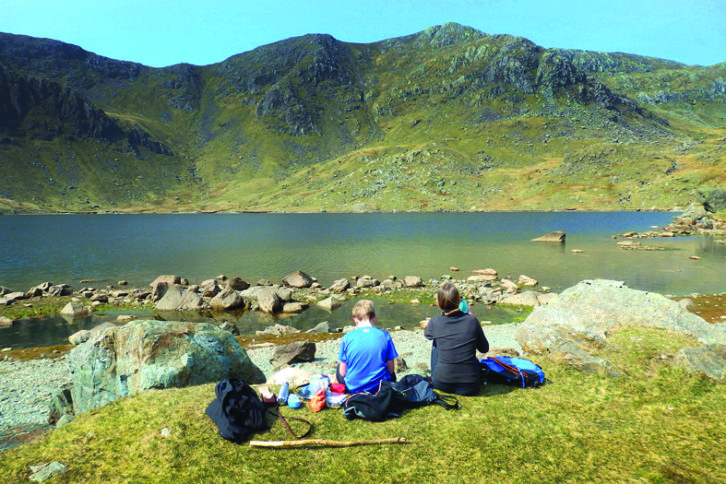
We agreed our first day should be a gentle non-car day, opting for a level walk around the lake to look for red squirrels. Walking from the site, we began this trail at the Keswick launch, alongside the theatre, amid the western fells of the Lake District.
Our scenic, 10-mile meandering waymarked path took in a visit to the Lodore Falls Hotel, to recount memories of past family holidays and picnics at the nearby Chinese Bridge, with its fantastic views to the south and the gorgeous area known as the Jaws of Borrowdale.
This trail can be enjoyed as shorter walks by taking a bus or catching a launch from one of the landing stages en route. Discounted launch tickets and a timetable are available at the campsite office.
After an impromptu meeting with friends, we stopped at the Lingholm Estate on the western shore, where the writer and illustrator Beatrix Potter, often accompanied by her pets, spent many holidays in her youth,
The estate’s wonderful Lingholm Kitchen and Walled Garden serves mouth-watering homemade cakes, which we enjoyed with a large pot of tea. In no hurry to depart, we browsed around the shops, buying a leaflet on Walks Around Keswick – a very sound investment, with enough routes, varying in distance and terrain, for our stay.
After a full day, our dog Lucy was pleased to see home again, happily resting her paws in the evening sun, while Ben sought out friends in the play area.
The summit of Cat Bells
After a fantastic first day, Ben set his sights a bit higher, wanting to climb the 375m-high summit of Cat Bells and Brandelhow on the western shore of Derwentwater.
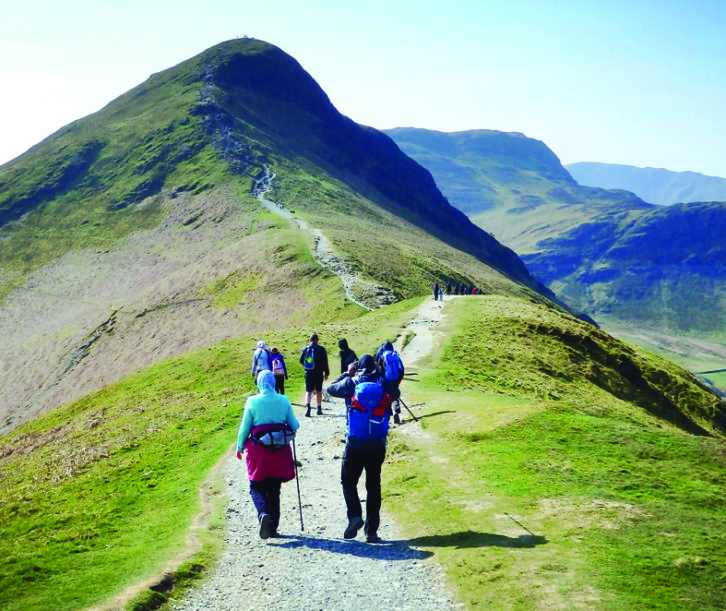
The Cat Bells trail involves a short, steep climb following a sweeping ridge, with stupendous 360-degree views of mountains and lakes at the windy summit, before returning to Hawes End via Brandelhow Woods and the lake shore. During our descent, it felt more like summer than spring, and our thoughts soon turned to a relaxing afternoon in the sun at basecamp.
Not expecting a heatwave, we hadn’t packed our outdoor chairs. We were amused to hear that we weren’t the only ones – discussions with site neighbours seated on picnic rugs revealed that Keswick’s outdoor stores had sold their entire chair stock overnight!
Up to the hills and tarns
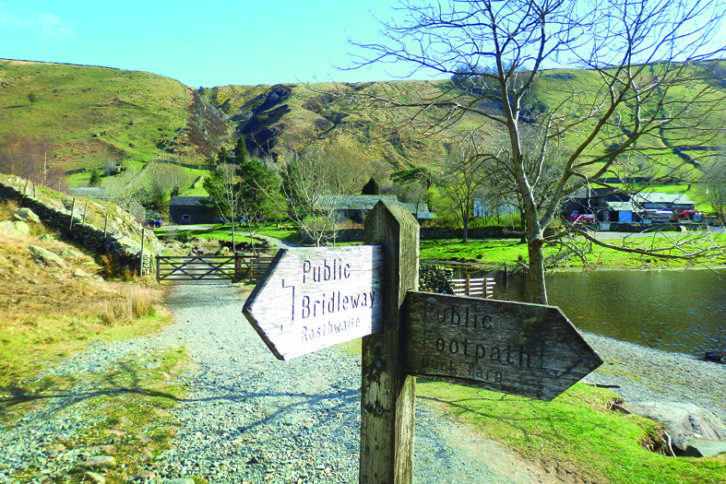
Wednesday’s walk was to Rosthwaite and Dock Tarn via Watendlath, a picturesque cluster of whitewashed stone buildings at the northern end of a small lake. We parked in the National Trust car park at Rosthwaite, and made the gradual climb into the hills towards Dock Tarn, set in a remote moor near the summit of Great Crag.
The walk was full of surprises, but beautifully serene. Alfred Wainwright, the famous local author, described this place to perfection: “Dock Tarn – a place to lie adreaming, and life seems a sweet, sweet thing.”
The next day, unsure if we could improve on that perfect walk, we took our chances and, at Ben’s request, went for a walk “with height” at High Seat and Bleaberry Fell; an impressive ascent of 605m.
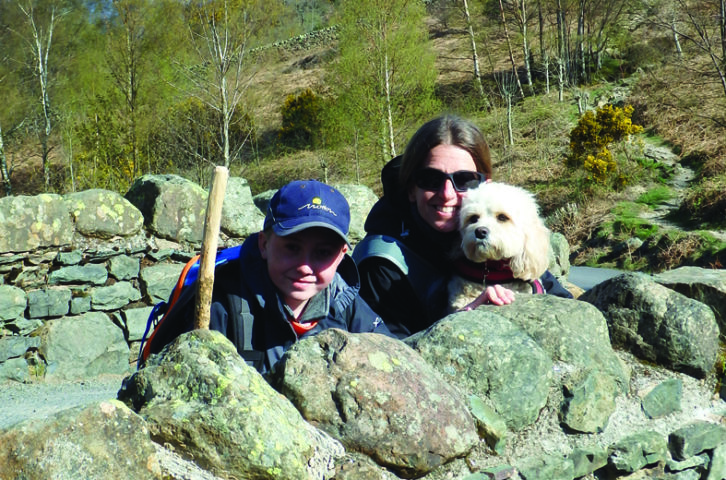
It’s another walk of varying terrain, and at times we were having to pick out the driest line through peat bogs before weaving back down the bracken-covered hillside to Ashness Bridge. This must be the most photographed packhorse bridge in the Lake District. These shorter walks proved ideal for Ben, allowing both recovery time and time out with friends at the park.
We slept well that night, and the following day were eager to try out a lower-level walk from the town centre, taking in a visit to the ancient stone circle at Castlerigg.
With a large bag of fudge from Roly’s Fudge Pantry, Ben navigated us along the disused railway line to Threlkeld, towards the mysterious Neolithic stones, erected some 4000-5000 years ago.
We made the most of our final day by taking a spectacular drive through Honister Pass, to the slate mines and daredevil walks of Via Ferrata Classic and Ferrata Xtreme. Higher up, the weather was wild, so Lucy sensibly tucked herself up in the car for a rest.
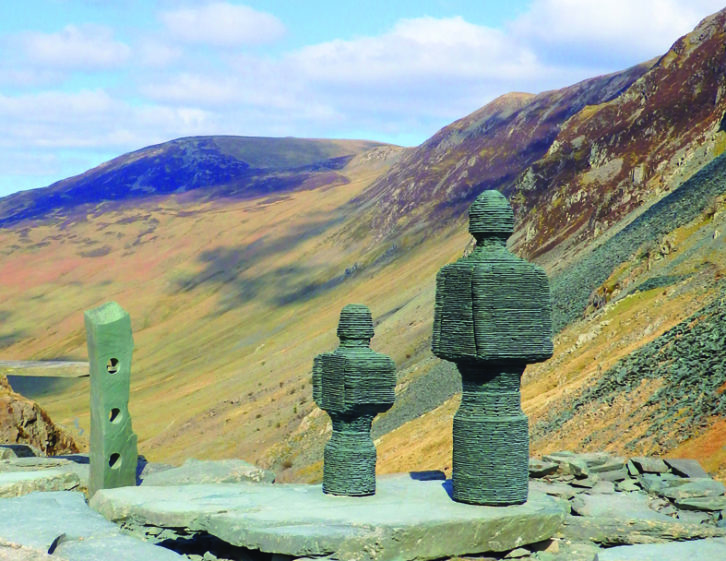
On entering the mines, Harvey and Ben agreed that the trails following the original miners’ route to the top of Fleetwith Pike – vertical climbs, cliff-face ladders and an Infinity Bridge across a 2000ft chasm – might not be such a good idea in the inclement conditions.
But with more agreeable weather for our descent, we paused to look around Buttermere, starting another walk to Newlands Valley from Hawes End to enjoy this quiet pastureland between high mountains.
A two-centre holiday
With just a 60-minute drive separating the Keswick site from the Coniston Park Coppice Caravan and Motorhome Club site, we were ready to try out walks that had previously been restricted by the snow.
After a mile’s leisurely walk into the one-time copper mining village of Coniston, we were reminded that the town is very much off the beaten track. The local supermarket, although well-stocked, is small and not as conveniently located from the site. That said, Coniston was far less touristy, making it considerably quieter, with plenty of watering holes to choose from.
Walks around the area certainly did not disappoint either, being equally dramatic and challenging, although we found that we needed the car more.
Following the success of our Keswick walks, we bought a Footprint leaflet for Coniston, Hawkshead, Grizedale and Far Sawrey. We eventually located the concealed trail from Coniston to Torver, but what should have been an easy seven-mile walk actually turned into quite a trek. Thankfully, the Wilson Arms – in the shadow of the Old Man of Coniston – was perfectly placed to raise our morale.
Peace and quiet
The following day, in need of a more restful interlude, we took ourselves off for a stroll along the well-trodden paths of Tarn Hows. Rewarded with superb views and a picnic spot at Black Fell, we then headed over to the cobbled streets of Hawkshead, where a 17th-century National Trust property houses Beatrix Potter’s original watercolour illustrations for her books.
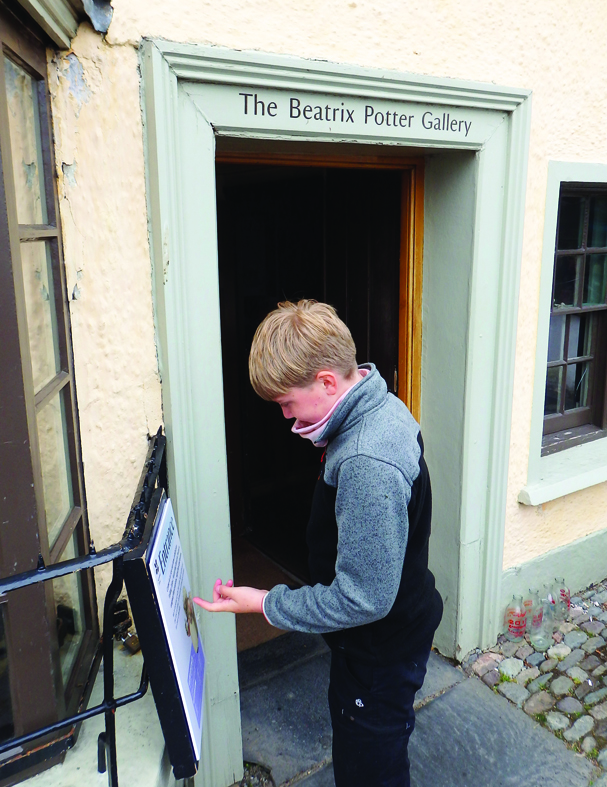
With plenty of daylight remaining, we drove over to Ambleside, but we quickly decided that it was far too busy for us. We decided instead to return to the peace and quiet of basecamp, to relax and enjoy a pot of whittling outside the van, before settling down indoors to watch Renée Zellweger in Miss Potter on DVD.
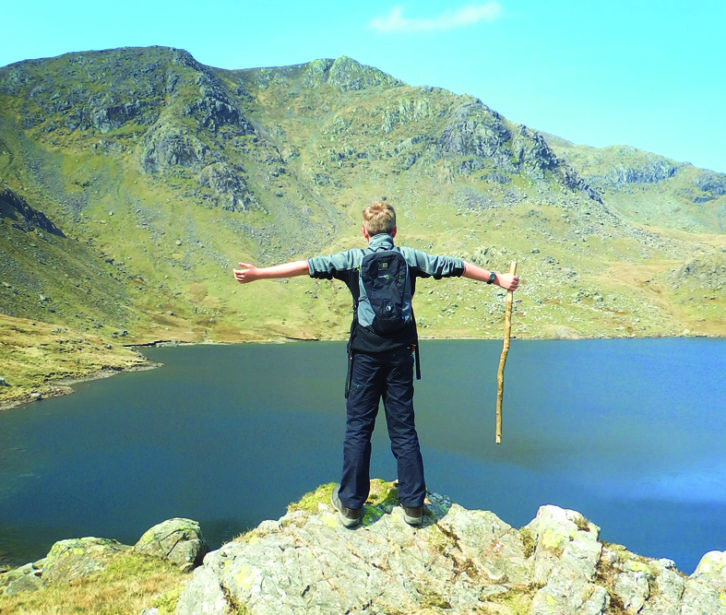
Under clear blue skies the next day, we wanted to find out more about Coniston and its links to the copper mines. With an ascent of 1300 ft, the five-mile walk into the heart of Coniston Fells and to Levers Water gave us a wonderful insight, with its numerous quarries, mines and spoil heaps along the way.
The Heritage Centre near the local youth hostel also provided a wealth of information for Ben to take notes and impress his geography teacher.
Climbing the mountain
Talking that evening, we all agreed that one of the many reasons for our return to Coniston was to tackle the popular, well-marked walk to the summit of The Old Man of Coniston.
After an enjoyable day of flat-walking at Tilberthwaite and Little Langdale, we had an early night and then loaded up on carbs in preparation for exploring The Old Man of Coniston (England’s seventh highest mountain), Swirl How and Wetherlam. This 10-mile circular walk, visiting three of the main summits of Coniston Fells, including a 3600ft ascent, would be a challenge.
Having packed clothing for all conditions and those all-important emergency rations, we drove up the steep road, parking below the distinctive peak of the Old Man. Unlike the conditions in winter, we embarked on this journey in early morning sun.
Sensibly pacing ourselves with Lucy, we enjoyed the uninterrupted views as far as the Cumbrian coast and Morecombe Bay, across to Langdale and Windermere. Lucy had tired paws and had clearly earned the right to be carried down the steep descent, although Ben, with a great sense of achievement and boundless energy, continued ahead, running from rock to rock.
Our final day was also my birthday. At the southern tip of Windermere, the family-friendly National Trust location of Fell Foot Park at Newby Bridge provided me with the perfect start to the day – joining the locals on a well-supported Parkrun.
After a wonderful birthday breakfast in the park, we visited nearby Windermere, initially avoiding the crowds on a walk that included a visit to the viewpoints at Post Knott and Orrest Head.
Returning to the town, we discovered the crowds had descended on Windermere shopping centre, so we opted instead to drive back for a more relaxing afternoon in the sun, opening birthday cards and collecting wood for our traditional end-of-holiday campfire.
Planning ahead
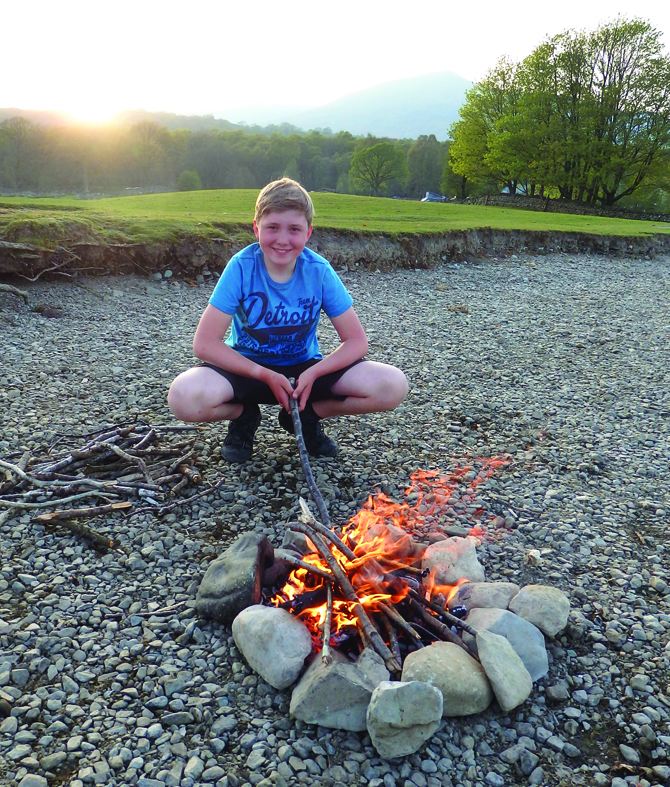
As we sat by the campfire alongside the lake, we all felt extremely grateful to have had such a wonderfully packed outdoor holiday of exploration and adventure, with so many reasons to return.
“What about another mountain next spring,” Ben suggested. “I’ve been thinking about Skiddaw and Ullock Pike.” That sounds like a plan, we agreed – although nobody has mentioned it to Lucy just yet!
Trip planner
When to go
We visited in April and booked our pitches ahead – campsites book up very quickly in school holidays. The Lake District is great at any time of the year, just be prepared for rain!
Way to go
We went via the Midlands, so traveled on the A14, M1, M54, M62, M6 and A66
Keswick C&CC Site
- Crow Park Road, Cumbria, CA12 5EP
- www.campingandcaravanningclub.co.uk
- 01768 772 392
- Open All year
- Pitches 250 touring
- Charges £9.40-£15.70
Coniston Park Coppice C&MC Site
- Park Gate, Coniston, Cumbria, LA21 8LA
- www.camc.com
- 01539 441 555
- Open All year
- Pitches 222 touring
- Charges From £10.85
Find out more
- Keswick Tourist Information
- Coniston Tourist Information: 01539 441 533
- Lodore Falls Hotel
- Keswick Launches
- Lingholm Estate
- Guided mine tour
- Old Man of Coniston walk
- Fell Foot Park
Our outfit
-
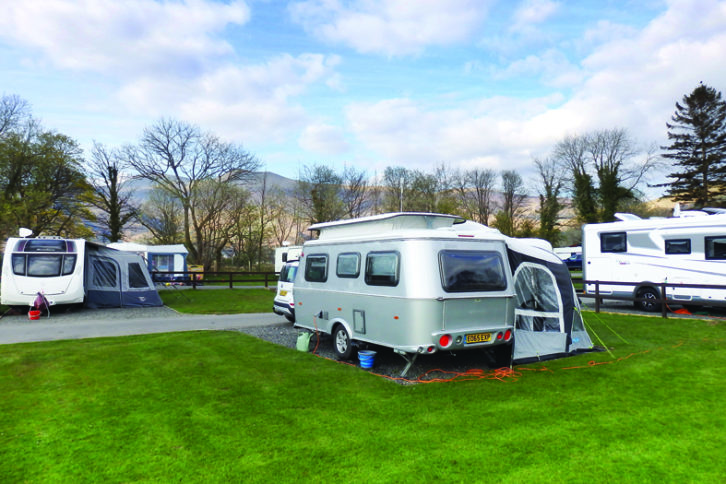
The Lyon family Eriba Troll 550 caravan, nicknamed ‘TinTin’ Tow car 2015 Škoda Yeti (Snowy)
- Caravan 2017 Eriba Troll 550 (TinTin)
If you liked this… READ THESE:
If you’ve enjoyed reading this article, why not get the latest news, reviews and features delivered direct to your door or inbox every month. Take advantage of our brilliant Practical Caravan magazine SUBSCRIBERS’ OFFER and SIGN UP TO OUR NEWSLETTER for regular weekly updates on all things caravan related.
We all enjoyed the five-mile walk into the heart of the Coniston Fells
